Sir Joseph Lister
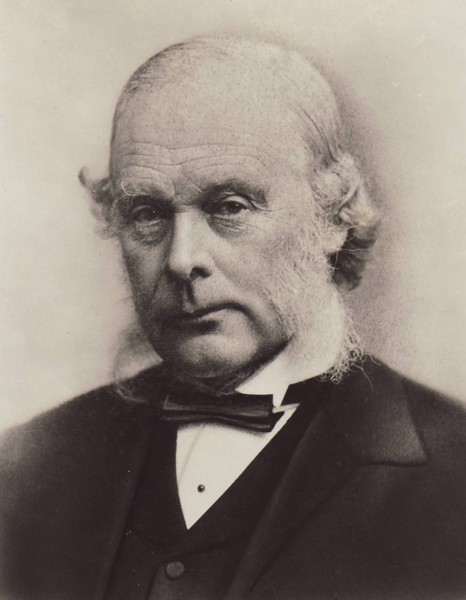
This February marks the 100th anniversary of the passing of Sir Joseph Lister. The father of modern antiseptic surgery, he was also the inspiration behind the founding of Johnson & Johnson. It was Lister’s lecture at the 1876 Philadelphia Centennial Exhibition that led medicinal plaster maker Robert Wood Johnson and his brothers to start a company to make the first mass produced sterile surgical dressings and sterile sutures and actively promote the adoption of sterile surgery. Today, non-sterile surgery would be unthinkable, but it wasn’t all that long ago -- just 161 years in the past -- that Sir Joseph Lister began to change surgery.
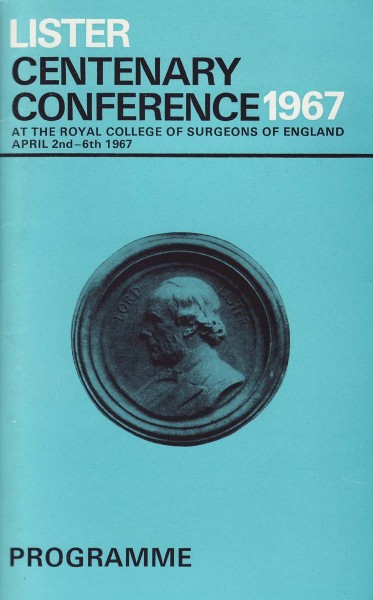
Sir Joseph Lister was born in Essex, England in 1827 and, interestingly enough, was the son of the pioneer of the compound microscope, Joseph Jackson Lister. When he was 26, Lister entered the Royal College of Surgeons (who are honoring Lister this year on the centennial of his passing). In 1854, Lister moved to the University of Edinburgh, Edinburgh Royal Infirmary in Scotland. In 1867, where he became an assistant to the surgeon James Syme. Lister married Syme’s daughter and they spent their honeymoon traveling to visit the leading hospitals and medical universities in France and Germany.
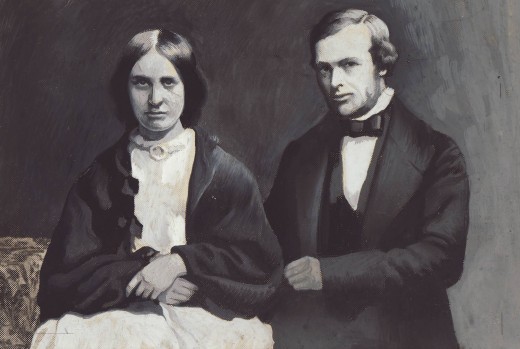
Before Lister, most people believed that infection was caused by exposure to “bad air” or miasma and as a result, surgeons did not wash their hands. The unsanitary conditions of non-sterile surgery led to astronomically high surgical infection and mortality rates, and most people at the time viewed surgery as a dreaded last resort. Lister became aware of Louis Pasteur’s work showing that microorganisms caused fermentation, and he applied it for the first time to surgery, showing that microorganisms ("germs," or "invisible assassins," as Lister called them) were causing surgical infections. Lister used carbolic acid as a sterilizing agent – as the story goes, he got the idea from observing the use of carbolic acid to treat sewage in Victorian England.
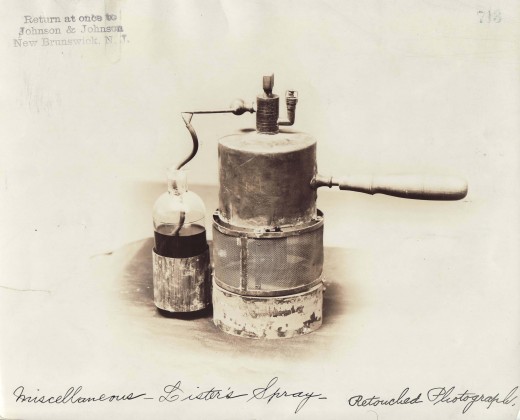
Lister soaked his dressings in carbolic acid, washed his hands in it, and devised a sprayer to spray it throughout the operating room….and the survival rates of his surgery patients climbed noticeably.
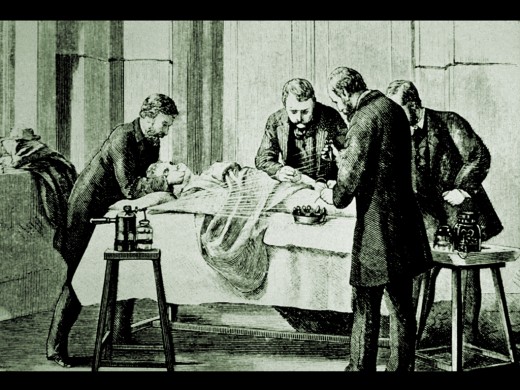
Perhaps Lister’s most famous case was his successful 1865 treatment of an 11-year old boy who had been run over by a horse cart. At the time, those kinds of injuries had a very low survival rate due to infection. But Lister used his antiseptic methods, and the boy’s wounds healed without infection. He published the case in The Lancet, his 1867 lecture on antiseptic surgery for the British Medical Association in Dublin was published in the British Medical Journal, and people started to take notice. Lister was made a baronet in 1883 in recognition of his many contributions. Besides sterile surgery, he was only the second man in England to operate on a brain tumor, and he improved a wide variety of surgical techniques and treatments. Today, Lister is recognized as the father of modern antiseptic surgery.
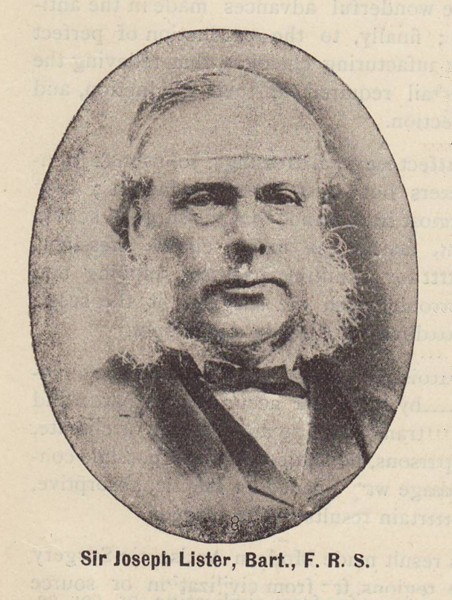
In 1876, Lister was invited to speak at the medical congress attached to the Philadelphia Centennial Exhibition. It was attended by medicated plaster maker Robert Wood Johnson, who was representing his company, Seabury & Johnson. Many prominent American surgeons were in the audience that day, eager to pick apart Lister’s antiseptic surgery methods, since there still was a great deal of skepticism that invisible things that people couldn’t see were causing infection.
Sir Joseph Lister spoke for several hours about the link between germs and infection, demonstrating his carbolic acid sprayer and antiseptic surgical methods and presenting data about patient survival. Robert Wood Johnson listened and was inspired to make mass produced sterile dressings, gauze and sutures so that surgeons could easily adopt Lister’s methods and save lives.
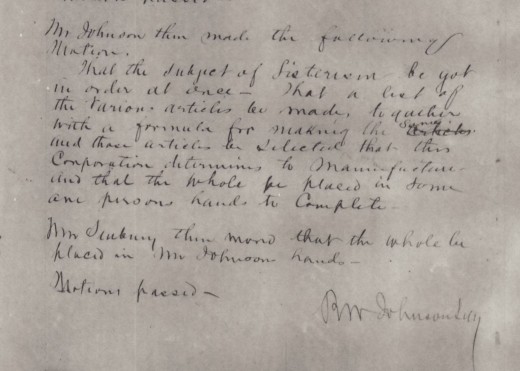
Robert Wood Johnson was put in charge of a small sterile surgical dressing line at Seabury & Johnson, but his partner was not tremendously receptive to the new products. The June 19, 1883 minutes of a Seabury & Johnson meeting stated “Mr. Johnson then made the following motion. That the subject of Listerism be got in order at once…Mr. Seabury then moved that the whole be place in Mr. Johnson’s hands…” [Minutes of Seabury & Johnson meeting, 6/19/1883, from our archives.] Two and a half years later, Robert Wood Johnson and his brothers left and started Johnson & Johnson. The first mass produced sterile surgical dressings, sterile sutures and the handbook Modern Methods of Antiseptic Wound Treatment from Johnson & Johnson, based on Lister’s antiseptic methods, made it possible for Lister’s belief and practice that surgery should be sterile to spread and eventually be adopted as the standard.
In 1891, Lister wrote to Johnson & Johnson inquiring about the Company’s methods of antiseptic manufacture, and Johnson & Johnson prepared a reply, which we published in booklet form.
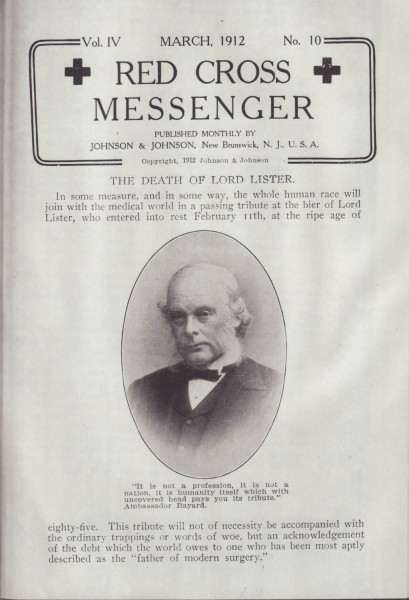
Sir Joseph Lister passed away 100 years ago, on February 10, 1912. He brought in the modern era of antiseptic surgery and inspired countless members of the medical profession, the founders of Johnson & Johnson, and he inspired a doctor and a pharmacist to invent a surgical disinfectant in 1879 named in his honor: LISTERINE® Antiseptic. (This post details how LISTERINE® evolved into an oral care product, in case you're wondering how that happened.)
By the accounts of people who knew him, Lister was patient, humble, kind "...a most admirable teacher" with an inquisitive mind, always learning from others and acknowledging his indebtedness to the people who had been his teachers, and those who joined him in advancing science and medicine.
"This sense of indebtedness to others, constituting as it does a splendid example for all of us, was no doubt only part and parcel of that great and natural modesty of the man which powerfully influenced all his views of his own work and life and which constituted one of the great charms of his character." ["A Memory and an Appreciation," by Sir Hector C. Cameron, Emeritus Professor of Clinical Surgery, University of Glasgow, from Symposium of Papers on the Late Lord Lister, Canadian Journal of Medicine and Surgery, May, 1912, p.6. From our archives.]
On behalf of countless surgery patients, and everyone at Johnson & Johnson, we salute and honor Sir Joseph Lister, the father of modern antiseptic surgery…and the inspiration behind the founding of Johnson & Johnson 126 years ago.
Next post: From Sir Joseph Lister to Sherlock Holmes. What was the connection between the world’s most famous fictional detective, Lister and Johnson & Johnson?

Thanks again Margaret for your wonderful research.
It is wonderful to see this celebration of Lord Lister and the inspirational influence on our company!! As part of my early training in Scotland, I was a bench researcher in immunology at the Sir Joseph Lister Laboratories in Edinburgh Royal Infirmary. Around us in the lab, we were surrounded by some of the original bottles, lab notebooks, and other artefacts from Lord Lister. It was fascinating and inspirational to see how his work a century ago changed the course of medicine and healthcare for all of mankind. Although I did not realize Lister's influence on J&J until seeing this article, it does seem very fitting that we have the same organizational aspirations today as Lister had at that time - to change the course of healthcare and the lives of patients!